Monthly Archives: April 2020
Art is about beauty
Artist Anita Gopal, who divides her time between Calcutta and London, talks about her charmed childhood in Calcutta
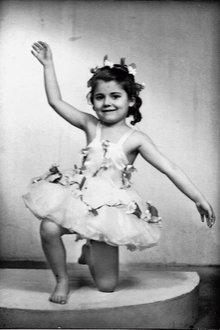
In part one of her story, artist Anita Gopal, who divides her time between Calcutta and London, talks about her charmed childhood in Calcutta, a chance meeting with artist David Hockney and her moment of truth
I was brought up in a very visual household. My father Prem was a British Raj dandy. He only wore Chinese silk shirts, sharkskin suits and bow ties that were hand-tied. He scoffed at the American clip-on versions. Never short-sleeved shirts: he considered it too vulgar for men to show their arms.
He dressed me and my brother Paul and my mother. He would take me to New Market in Calcutta and buy me dresses and matching knickers, shoes and bags…often six at a time!
I was told that there was a clear distinction between good and bad taste. It was not a matter of opinion.
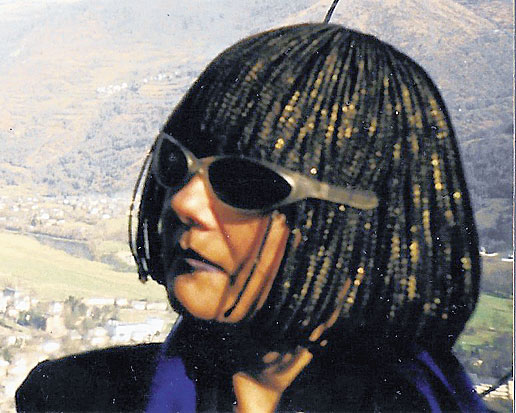
My mother Rosalie was a beauty and glamorous. She was English and came from a family in which beauty was highly prized. My parents met and married in London and travelled to India on a P & O liner in 1947 to land in the middle of Partition. My father’s family were Punjabis from Lahore and were Hindus, so they left everything and ended up in Delhi. My grandfather Nand, who had also been a British dandy, followed Gandhi and started wearing dhotis!
Eventually my parents moved to Calcutta where they became a glamorous couple. They went to parties every night. They went to the Grand, the Great Eastern and Spencer’s and Firpo’s and the nightclub Golden Slipper.
My mother always wore beautiful saris in the evenings. I still remember the smell of Lanvin’s Arpege and the rustle of saris when she kissed me goodnight. She gave me a golden slipper charm from the nightclub which I kept for years. My birth certificate states place of residence as Grand Hotel! My parents knew M.S. Oberoi, who kindly let them stay at the Grand for six months.
Later they lived in Ballygunge and my father designed the flat with cream walls and dark red sofas; the verandah with a bar and cane furniture, which later featured in my life.
With this background it was fairly inevitable that I became mad about fashion and glamour and beauty.
My father died tragically young and my mother, brother and I moved to London.
I went to Kingston School of Art to do a B.A. Hons. in fine art. During my foundation course fashion was one of the elements. I was asked to do my BA in fashion but I refused as I thought it was trivial and frivolous! I thought fine art was a much more serious vocation!
I painted from the model for three years, using a method of measuring known as the Coldstream method by William Coldstream, an English painter. It was a very strict and precise way of painting based on the school of philosophy called Logical Positivism started by A.J. Ayer, an English philosopher. This style was not approved of at Kingston School of Art. It was considered reactionary. One was supposed to paint in the house style of abstract expressionism.
After college I lost faith in the idea and stopped painting.
I travelled back to India with my partner for the first time since childhood. We started a small business importing cane furniture from Calcutta to London. It was a successful business, but I also started painting again in a very different way. Whilst travelling all over India I fortuitously met David Hockney, who told me to do whatever I liked, as that was what he had always done.
This was a release for me from the self-imposed Coldstream method.
I started using different viewpoints like Cezanne and local colours like El Greco and rhythms like Delacroix.
I suddenly realised that art was about beauty. I painted again from the model and from fashion magazines like Vogue which are full of beauty and glamour.
So full circle back to my childhood upbringing!
Needless to say I have hundreds of clothes shoes and bags!
I also am very particular and fastidious about the decor in my flat!
This is part one of my art story…the second part is how I came to invent my eventual style, which I call Fractism. It is made entirely of paper and is cut paper relief, but of course it is all cut from glamorous magazines.
(To be concluded next week)
source: http://www.telegraphindia.com / The Telegraph, online edition / Home> Style / by The Telegraph / April 30th, 2020
30 a
Bengal insititute develops robotic device that can collect samples of COVID-19 suspects
The device will help the frontline healthcare workers in delivering services while maintaining social distancing, reducing the chance of them getting infected.
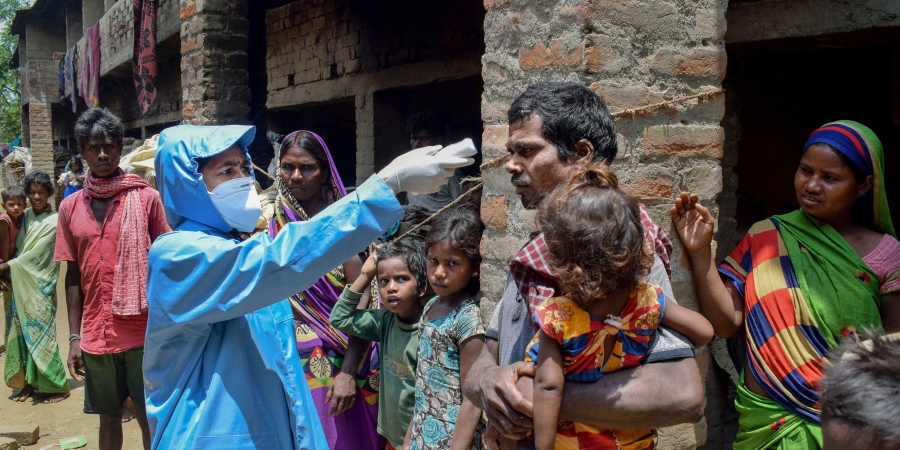
rus in Nadia district Tuesday April 28 2020. (Photo | PTI)
‘
Kolkata :
The CSIR-CMERI in Durgapur has developed a low-cost robotic device that can be used for collecting samples of people having symptoms of coronavirus, besides treating COVID-19 patients.
The ”Hospital Care Assistive Robotic Device” will be very helpful for the frontline healthcare workers who are treating COVID-19 patients, said professor Harish Hirani, director of CSIR-CMERI (Central Mechanical Engineering Research Institute).
It will help them in delivering services while maintaining social distancing, reducing the chance of them getting infected, he said.
The cost of the device is less than Rs 5 lakh and the weight is not more than 80 kg, making it easy to use and affordable for healthcare facilities, Hirani said.
The device, which has a video call facility, can also be used in providing food to the patients.
The device can be navigated through automatic and manual modes and needs to be monitored by a nursing booth with a control station.
“It will be able to transport food items, medicines, testing equipment, files, personal protective equipment in a comprehensive sterilised environment,” Hirani said.
A spokesperson of the institute said the device can function in a range of 0.5 km and has a battery life of four hours.
“The clinical trial of the device has been successful. We will be ready if healthcare facilities and governments show interest,” he said.
source : http://www.newindianexpress.com / The New Indian Express / Home> Cities> Kolkat a/ by PTI / April 29th, 2020
28
27
26
25
British officer with Calcutta ties raises £15m
‘You’ve all got to remember that we will get through it in the end’
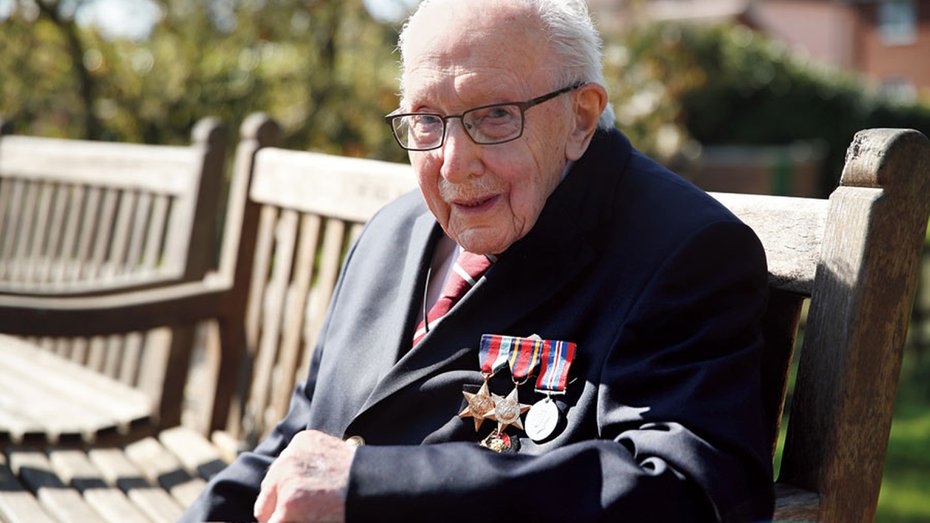
Captain Tom Moore, a former British army officer who served in Calcutta during World War II, had intended to raise £1,000 for the NHS by marking his 100th birthday on April 30 by doing 100 laps of the 25-metre loop in the garden of his home in Marston Moretaine, Bedfordshire, in 10-lap segments.
But by the time Moore, aided by his walking frame, had completed his mission on Thursday morning, donations from 620,000 people in 53 countries had taken the total on his fundraising page to over £15m — a record for a single campaign on “JustGiving”.
It is all a long time since his days in India. Moore was conscripted into the British Army in June 1940 when he was 20, and began his military career in Otley, West Yorkshire, where he joined the 8th Battalion, the Duke of Wellington’s Regiment under Lieutenant Lord George Saville.
This might explain why, when donations hit £10 million late on Wednesday night, Moore tweeted “Virtutis Fortuna Comes” — the Latin motto of the Duke of Wellington which means “fortune is the companion of virtue”.
In October 1941, his unit was posted to Bombay, with the sea voyage, via Cape Town, taking six weeks. He took a train to Poona and joined the 50th Indian Tank Brigade, where he was asked by his commander to start a motorcycling course for the Brigade because of his expertise in the sport.
He was next ordered to move to his base in Calcutta — the journey during the monsoons took three weeks — and later took part in two exercises in the Arakan before moving to Rangoon.
After all in his background, he probably thought his walk in England, even at 99, was a bit of a doddle.
Still, among those who applauded his fundraising achievement was Ben Stokes, Wisden’s cricketer of the year, who said: “The funds you have raised for the real heroes (in the NHS) are just sensational.”
Chancellor Rishi Sunak said Moore’s “extraordinary” efforts “goes to show the British spirit is as strong as it’s ever been”, while the health secretary Matt Hancock remarked, “This is an awful crisis, but there are some little shafts of light…. He’s served his country in the past and he’s serving his country now, both raising that money for the NHS, but also cheering us all up.”
From his home, Michael Ball, a well-known singer, offered a rousing rendition of You’ll Never Walk Alone.
As the sprightly dressed 99-year-old, with his medals gleaming in the spring sunshine, finished his mission, there were TV cameras and journalists to record the occasion plus four soldiers from the Yorkshire Regiment to give him a ceremonial salute.
An emotional Captain Moore, then revealed that he had postponed his 100th birthday party and that after a short rest he would resume his walk.
He added an uplifting message to people in Britain and beyond: “You’ve all got to remember that we will get through it in the end, it will all be right but it might take time. All the people are finding it difficult at the moment, but the sun will shine again and the clouds will go away.”
He said that NHS workers on the frontline “deserve everything we can give them”, and that “I’ve always been one for having a future, I always think things will be good. We’ve fought so many battles and we’ve always won and we’re going to win again.”
www.telegraphindia.com / The Telegraph, online edition / Home> World / by Amit Roy in London / April 17th, 2020
Forgotten hero of a forgotten battle
A 36-year old schoolmaster and his disciples, challenged the tyranny of the British Raj, and for a few glorious days, threw off the yoke of imperial servitude.
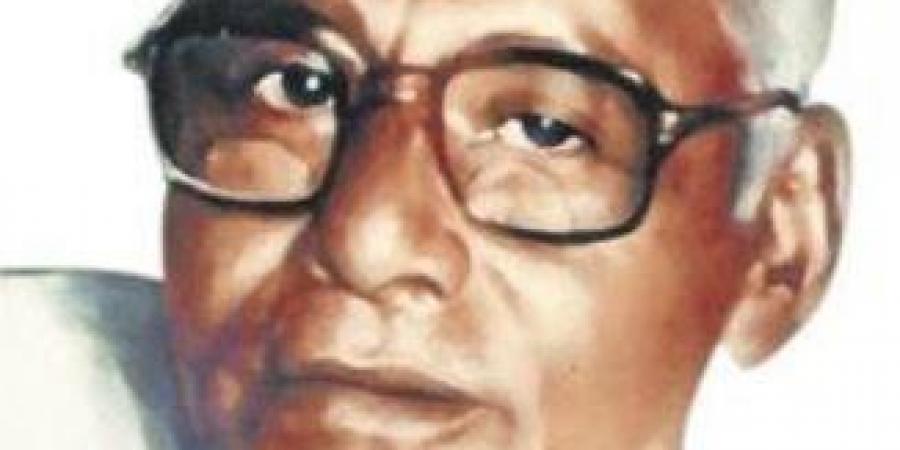
Chennai :
A 36-year old schoolmaster and his disciples, challenged the tyranny of the British Raj, and for a few glorious days, threw off the yoke of imperial servitude. They paid a heavy price. But a tinder had been struck, and a group of young Bengali men and women had briefly managed to attack and capture British strongholds. I am referring to the little-known saga of the Chittagong Armoury Raid and the ensuing Battle of Jalalabad Hills, led by ‘Masterda’ Surya Kumar Sen, former president of the Indian National Congress’ Chittagong branch.
My grandfather Suresh Chandra Dey was one of the 65 members of the Chittangong branch of the Indian Republic Army, who raided the local armoury and cut off the communication systems to isolate the important port city. A few days later, a regiment of more than 20,000 British troops struck back. During this fierce battle, my grandfather was shot. He managed to survive the injury and was helped by his comrade Shanti Nag, who carried him down the hill to safety.
Dey was eventually arrested and jailed without a trial, incarcerated as a political prisoner. When his tormentors could not extract information from him through coercion and torture, they tried bribing him, offering to send him to England and fund his higher studies as a barrister.
He did not give in and was eventually released and placed under house arrest. So much so, when my grandfather wed my grandmother Kironmoyee Dey, it was in the presence of British soldiers. He then made his way westward, and eventually founded a the first Sreeleathers store in Jamshedpur in 1952.
My grandfather had chosen to dedicate his life to the idea of an independent India. But the pocket of earth on which he and his comrades bled into was cleaved away at partition, first as East Pakistan and then as Bangladesh.
It falls upon all of us to remember our forebears, and cherish the country that was founded on the blood sacrifice of so many forgotten heroes.
source: http://www.newindianexpress.com / The New Indian Express / Home> Cities> Chennai / by Rijuta Dey Bera / Express News Service / April 23rd, 2020